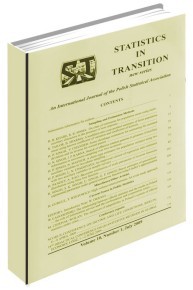MODELLING LANGUAGE EXTINCTION USING SUSCEPTIBLE-INFECTIOUS-REMOVED (SIR) MODEL
MODELLING LANGUAGE EXTINCTION USING SUSCEPTIBLE-INFECTIOUS-REMOVED (SIR) MODEL
Author(s): N. A. Ikoba, E. T. JolayemiSubject(s): Business Economy / Management
Published by: Główny Urząd Statystyczny
Keywords: language extinction; stochastic epidemic model; non-homogeneous mixing; quasi-stationary distribution; time in which a language is expected to be extinct
Summary/Abstract: The study presents a stochastic epidemic model applied to the model of indigenous language extinction. The Susceptible-Infectious-Removed (SIR) categorization of an endemic disease has been reformulated to capture the dynamics of indigenous language decline, based on the assumption of nonhomogeneous mixing. The time in which an indigenous language is expected to be extinct was derived using a modified SIR model with the population segmented into several sub-communities of small sizes representing family units. The data obtained from the 2016 indigenous language survey conducted in several parts of Nigeria and from the 2013 Nigeria Demographic Health Survey (NDHS) were used to estimate the key parameters of the model for Nigeria’s several indigenous languages. The parameters of interest included the basic reproduction number, the threshold of endemicity, and the time in which a language is expected to be extinct, starting from the endemic level. On the basis of the time in which a language is expected to be extinct, several of the surveyed languages appeared to be in a precarious condition, while others seemed virile, thanks to a high language transfer quotient within families.
Journal: Statistics in Transition. New Series
- Issue Year: 20/2019
- Issue No: 4
- Page Range: 71-87
- Page Count: 17
- Language: English

